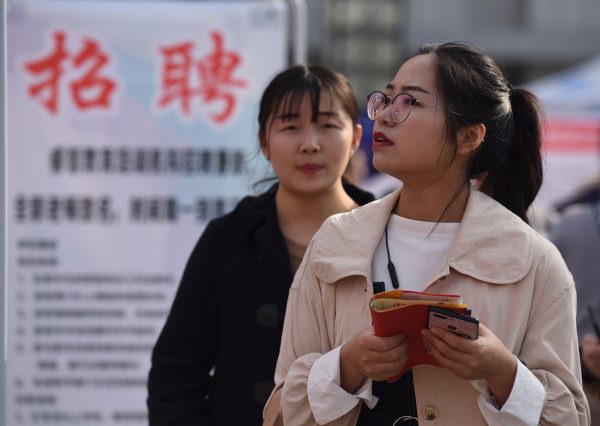Market reforms have not reduced gender discrimination in the rural economy either. There has been some reduction in wage discrimination in the most marketised sectors of Chinese rural industry since the 1980s, but discrimination still accounts for two-thirds of the wage differential in these sectors. This suggests a more serious gender problem than in other industrial and developing economies.
The urban female labour force participation rate dropped to 57 per cent in 2009 from 78 per cent in 1988. This can be attributed to the intensified pressures placed on women arising from their dual responsibilities as unpaid family carers and income earners during the economic transition.
During the 1980s and 1990s, women accounted for one-third of Communist Party members. By 2017 they accounted for one-quarter. Communist Party membership is associated with earnings that were 6 per cent and 10 per cent higher for men and women, respectively, in 1995. There has also been an increasing wage reward for party membership — it rose from 29 per cent in 1988 to 33 per cent in 1999. The higher return for women did not reduce the earnings gap because of lower female membership numbers.
There are various circumstances that contribute to inequality of opportunity in China’s individual labour income. Predominant among these circumstances are the occupation and education of one’s father, alongside one’s geographical location, ethnicity and rural or urban hukou status. But ranking above all of these in China’s case is the importance of gender — a point that does not hold in any other country for which similar analyses have been conducted.
Besides circumstances, an individual’s effort — or choices — also impacts on labour market outcomes. Higher levels of education, non-agricultural occupations, Communist Party membership and non-migration are associated with higher income. Some disparities in gender inequality reflect women working fewer hours or in different occupations. For example, some 40 per cent of Chinese women and 28 per cent of men work in agriculture. Still, whether this comes down entirely to a matter of choice is debatable.
Marriage (considered a choice in most cases) is interestingly associated with higher average income for men, but lower income for women — although this is only true in rural China. Close to three-quarters of married males in rural China state that they never or rarely cook, 80 per cent never or rarely wash dishes and 82 per cent never or rarely do washing or cleaning — all significantly higher percentages than their urban counterparts. This suggests a relatively weak position of rural women in intra-household bargaining relating to the time allocation for housework.
Measures to assist young women to exit the agricultural sector and find off-farm employment would improve their earnings potential in the future. Ongoing reforms to the hukou system of household registration to ensure that rural migrants are not discriminated against in urban areas would also equalise the opportunities they face with those of their urban counterparts.
The importance of marriage and its different impact on the annual incomes of rural men and women mean China’s ‘gender discrimination’ begins in the home. The gender divide in household chores is indicative of the costs Chinese married women bear disproportionately.
Efforts to improve childcare systems and grant paternity and maternity leave are equal opportunity policies that could improve the situation, especially in rural areas. So would a cultural shift towards equal contributions by men and women to chores within the household.
Jane Golley is Associate Professor and the Director of the Australian Centre on China in the World, College of Asia and the Pacific, The Australian National University.
Yixiao Zhou is a Senior Lecturer at the Crawford School of Public Policy, the College of Asia and the Pacific, the Australian National University.
Meiyan Wang is Professor at the Institute of Population and Labor Economics, the Chinese Academy of Social Sciences.
This article is abridged from Jane Golley, Yixiao Zhou and Meiyan Wang’s ‘Inequality of opportunity and gender discrimination in China’s labour income’ in Ligang Song, Yixiao Zhou and Luke Hurst (eds.), The Chinese Economic Transformation: Views from Young Economists, China Update, ANU Press, 2019.

